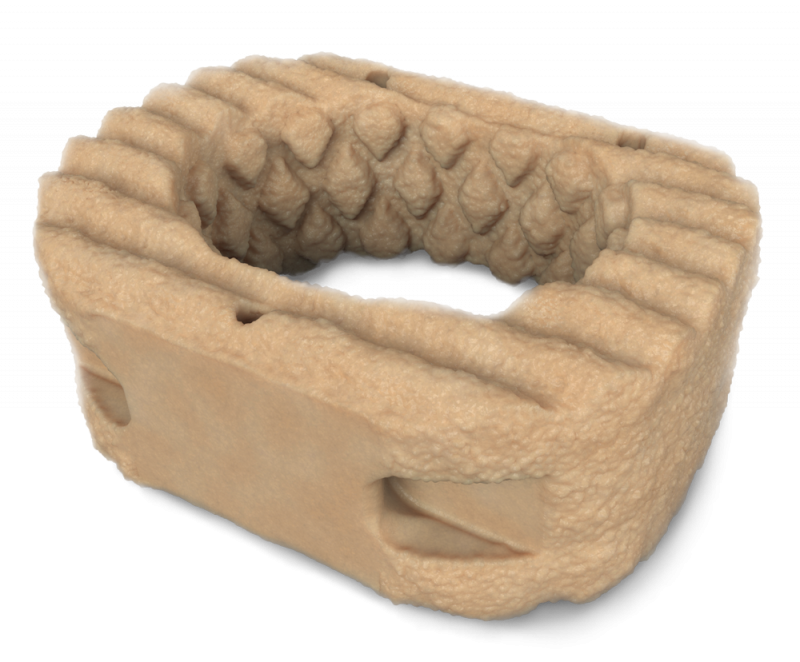RTI Surgical, a Michigan-based medical technology company, has enrolled its first Degenerative Disc Disease (DDD) patient for clinical evaluation of its Fortilink Interbody Fusion (IBF) 3D printed implants.
The Fortilink IBF devices are made using the company’s TETRAfuse 3D Technology which integrates 3D printed nano-rough surfaces for enhanced protein absorption, bioactivity, cell adhesion, and tissue growth for fusion in cervical and lumbar surgeries.
“While PEEK implants are widely used, data suggest PEEK has minimal characteristics to enhance implant osseointegration [the connection between living bone and a load-bearing artificial implant],” said Dr. Christopher Kepler, MBA, at the Rothman Orthopaedic Institute.
“The porous Fortilink cages with TETRAfuse 3D Technology have the potential to create a favorable environment for bone growth and are radiolucent. I look for the ongoing study to introduce surgeons to this product and demonstrate the advantages of Fortilink cages over other cage materials.”
TETRAfuse@ 3D Technology from RTI Surgical on Vimeo.
The FORTE study
The Clinical Evaluation of Fortilink Interbody Fusion Device with TETRAfuse 3D Technology, known as the FORTE study, is a post-market evaluation of the safety and performance of the Fortilink-C, -TS, and -L IBF implants. It ultimately seeks to access the radiographic evidence of cervical and lumbar fusion at three and six months post-surgery in DDD patients.
RTI Surgical defines DDD as an age-related condition when one or more discs between the vertebrae of the spinal column deteriorate or break down. Spinal fusion surgery is used as a common treatment option to reduce pain related to DDD.
Nevertheless, the company reports that health care costs and productivity losses associated with DDD-related surgeries are more than $50 billion annually. Thus, the FORTE study will assess the Forlink devices as an effective, cost-efficient solution. Dr. K. Brandon Strenge, at the Orthopaedic Institute, Shropshire, U.K., added:
“I’ve really been impressed with the TETRAfuse implants so far [and] I’m excited to see the bone growth showing on the CT scans, unlike the titanium implants out there.”
The data collected from this study will be collected from 150 patients from 20 U.S. medical facilities will be evaluated over the next 3.5 years. All of the DDD subjects are expected to be enrolled by Q1 2020.

Voting for the 2019 3D Printing Industry Awards is now open. To see if your nominations made the shortlist, and to help decide this year’s winners, cast your votes now.
For the latest academic additive manufacturing research, subscribe to the 3D Printing Industry newsletter, follow us on Twitter and like us on Facebook.
Looking for a career in additive manufacturing? Visit 3D Printing Jobs for a selection of roles in the industry.
Featured image shows Fortilink-C IBF System with TETRAfuse 3D Technology. Image via RTI Surgery.


